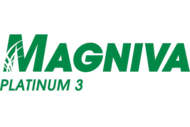Clostridial Fermentation
Clostridia bacteria are commonly present on forages when it is harvested and ensiled. During fermentation, lactic acid bacteria (LAB) that have been growing aerobically shift to anaerobic fermentation pathways. Without good harvest and silage management practices, obligate anaerobic microbes, like clostridia, can start to grow.
Clostridia bacteria consume forage carbohydrates, proteins and lactic acid as their energy source and excrete butyric acid, which has a pungent and unpleasant smell. This results in poor-quality silage, that coupled with the pungent odor tends to suppress intake.
Signs of Clostridial Silage
- Strong fecal smell
- Wet silage
- Silage with an elevated or lowered pH
- Butyric acid levels greater than 0.1% in laboratory analysis
Risks for Clostridial Fermentation
Clostridia are more prone to growth when:
- Excessive moisture is present (due to rain during wilting, seepage into the structure, etc.)
- Forage harvested below 30% dry matter (DM)
- High amounts (more than 8%) of soil, or ash, harvested with the forage
- Forage was poorly packed
- Low lactobacillus bacteria levels in forage
- Very high ensiling temperature
Wet pockets of forage in the ensiling structure can result in clostridial fermentation of specific areas of the silage structure. Producers should watch for signs of clostridial fermentation during feedout.
Challenges with Clostridia Silage
When silage crops undergo clostridial fermentation, the resulting feedstuff is at risk for:
- Nutrient loss
- Reduced feed efficiency
- Reduced dry matter intake in ruminant animals
- Loss of milk production in dairy cows and potential milk taint
- Increased risk of ketosis or other metabolic disorders in dairy cows
Clostridia can break down proteins, leading to significant loss of silage quality and the production of biogenic amines — such as histamine, putrescine and cadaverine — that can affect herd health and/or production and produce odors.
Clostridia botulinum. Localized production of botulinum toxin can occur if a large mammal, for example, a boar or deer, accidentally becomes ensiled. In these cases, botulinum toxin can develop even with optimal ensiling conditions and management. Feeding even small quantities of this silage can lead to multiple, rapid livestock fatalities.
Preventing Clostridial Silage
To prevent clostridia growth, producers can:
- Harvest at the correct DM level for the forage crop
- Achieve the proper packing density
- Cover and seal the ensiling structure to prevent moisture seepage and oxygen ingress
- Use a research-proven forage inoculant
Managing Clostridial Silage
Always discard spoiled or moldy silage. In particular, avoid feeding clostridial silages to pre-fresh and post-fresh dairy cows. If clostridial silage must be fed, limit the intake of butyric acid to no more than 1.7 ounces, or 50 g, per cow per day.
Additional Reading:
- Feeding spoiled silage (FJ Quality Silage)








